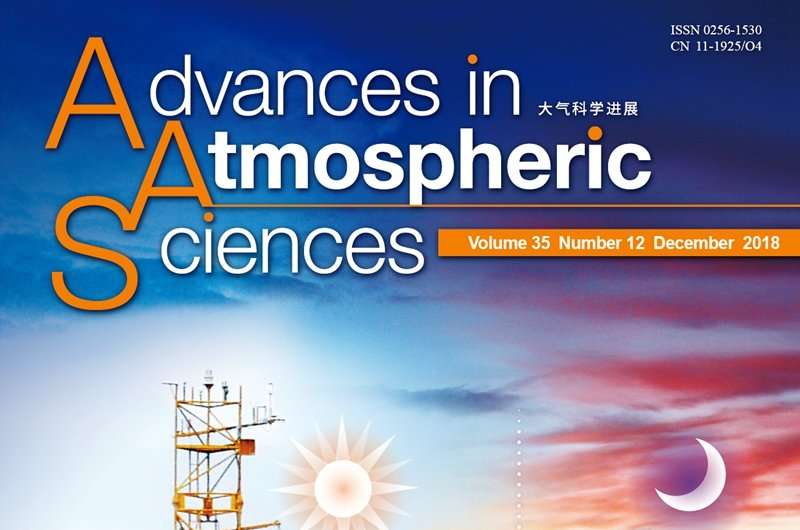A 31-year global diurnal sea surface temperature dataset

Based on a second-order turbulence mixed layer model, Dr. Tiejun Ling, senior scientist of the National Marine Environmental Forecasting Center, China (NMEFC), and his research team, have developed a new ocean mixed layer model.
The model is capable of reproducing a more realistic sea surface temperature (SST) diurnal cycle than existing models. Meanwhile, through a series of algorithms and parallel optimization, the computational efficiency is greatly improved in the new mixed layer model, and thus has the potential to be a considerably useful tool in studying the long-term diurnal variation of SST. The findings of this research have recently been published in Advances in Atmospheric Sciences, and the paper is featured on the front cover of the issue in which it appears (Volume 35, Issue 12).
Advantage of the ocean mixed layer model
Air-sea interaction is an important process affecting climatic variation, and SST is one of the most important parameters governing this interaction. As one of the dominant scales of variation in SST, the diurnal cycle, which varies globally by 2?, has a significant impact on the evolution of weather and climate systems.
Typically, the diurnal variation of SST is studied through observation or model data. In terms of the former (i.e., observational data), the spatial coverage of drifting buoys and satellite-borne data are non-uniform and discontinuous, making it difficult to study the long-term variation of SST. The modeling approach, however, can help with this problem. Having access to high-frequency SST data can benefit the study of warming thresholds, peak values, and timings.
Compared with empirical models, an ocean mixed layer model can reproduce more realistic dynamic and thermal processes in the upper ocean, and the computational cost is lower than that of a climate system model.
Reliability of the hourly SST dataset
The accuracy of the SST diurnal variation greatly depends on the reliability of the model data. In this study, comparisons with in situ observational data showed that the new model performs well, with a mean bias of 0.07°C, and root-mean-square error and correlation coefficient of 0.37°C and 0.98, respectively. Similar results were obtained from satellite data.
Climatic characteristics of the variation in the SST diurnal cycle
Dr. Ling and his research team explored the new dataset and revealed some of the climatic characteristics associated with the variation in the SST diurnal cycle. The characteristics coincided with those obtained from satellite data.
The 31-year climatology revealed that the SST diurnal variation is small across most regions, with higher values apparent in the eastern and western equatorial Pacific, northern Indian Ocean, western Central America, northwestern Australia, and several coastal regions.
Significant seasonal variation of diurnal SST was found to exist in all basins. In the Atlantic and Pacific basins, the seasonal pattern is oriented north-south, following the variation of solar insolation; whereas, in the Indian basin it is dominated by monsoonal variability, according to Dr. LING.
"At the interannual scale, the results highlight the relationship between the diurnal and interannual variations of SST, and reveal that the diurnal warming in the central equatorial Pacific could be a potential climatic indicator for ENSO prediction," he explains.
Dr. LING says the team found that SST diurnal variation has a significant impact on global climate change at both the seasonal and interannual scale. More importantly, the diurnal warming of SST in the central equatorial Pacific could be a potential indicator for ENSO prediction.
"Besides, this dataset has good research and application prospects. These long-term, high-resolution hourly SST data could be applied in studies of the long-term trend in regional and global SST diurnal variation, as well as the relationship between SST diurnal variation and regional and global climate events," he adds.
Software copyright has been obtained for the ocean mixed layer model, and is being applied operationally at the National Marine Environmental Forecasting Center, China.
Future plans
The research team will maintain running the ocean mixed layer model operationally, continually updating the data and using them to study the long-term trends of SST diurnal variation and the effects of SST diurnal variation on global and regional climate.
More information: Xiang Li et al, A 31-year Global Diurnal Sea Surface Temperature Dataset Created by an Ocean Mixed-Layer Model, Advances in Atmospheric Sciences (2018). DOI: 10.1007/s00376-018-8016-7
Provided by Chinese Academy of Sciences





















